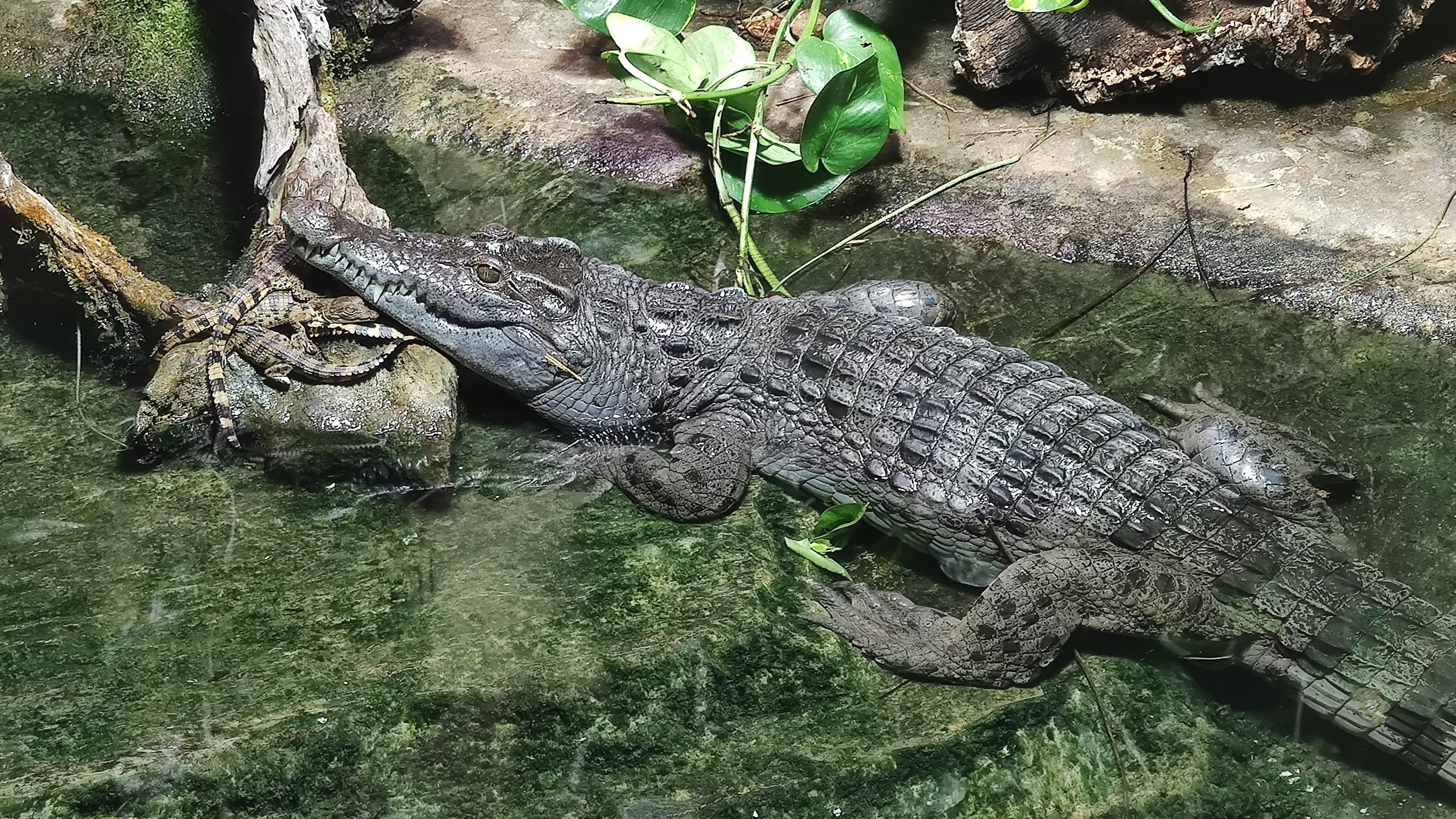The One Plan Approach Benefits Philippine Crocodile Conservation
Blueprint
ASSESS
The Philippine Crocodile has been listed as Critically Endangered by the IUCN Red List of Threatened Species since 1996 and is listed in Appendix I of the Convention on International Trade in Endangered Species of Wild Fauna and Flora (CITES). The species is threatened by habitat use and conversion, persecution by rural people, and entanglement in fishing nets. In the 2016 assessment, it was estimated that less than 200 mature adults remained in the wild, spread among three separated locations, with populations severely reduced compared to historic levels. It was also determined that some of the ex situ conservation breeding programmes contained phenotypically indistinguishable hybrids between the Philippine Crocodile (Crocodylus mindorensis) and the widespread Saltwater Crocodile (C. porosus), further hampering reintroduction efforts.
PLAN
A National Recovery Strategy for the Philippine Crocodile was published in 2000 and updated in 2005, followed by a national forum on crocodiles that was held in the Philippines in February 2007. In situ conservation efforts have included interviewing local residents: this process helped find overlooked Philippine Crocodile populations and aided in locating suitable sites for field work in the south of the Philippines. Ongoing communication with local stakeholders keeps experts aware of the changing local environment. By surveying these stakeholders, researchers can also obtain a better estimate of the population size.
Among the ex situ conservation efforts, molecular analyses were conducted of captive Philippine Crocodiles both in-country and at various partner organisations abroad. The genetic data aimed to identify hybrids and also guide present breeding recommendations for the expansion of the ex situ conservation breeding groups. Crocodiles would then be translocated to restock wild habitats and augment diminished natural populations.
ACT
The European Studbook (ESB) for Crocodylus mindorensis was established by the European Association of Zoos and Aquaria (EAZA) in 2012 and is administered by Cologne Zoo, Germany. ESB participants support in situ Philippine Crocodile conservation in the North (Mabuwaya Foundation). For captive breeding in Europe, 15 young crocodiles were imported from the Palawan Wildlife Rescue & Conservation Center, and on loan from the Philippine Department of Environment and Natural Resources (DENR). Initially, six European zoos participated in the ESB. Because all crocodiles covered by the ESB were found to be genetically pure, these individuals were cleared as candidates for conservation breeding. The first breeding in Europe took place in 2013 at Cologne Zoo, which also became a center for comprehensive crocodile research, including studies of social and reproductive behaviour. Further breeding successes subsequently occurred at the Protivin Crocodile Zoo (Czech Republic), London Zoo (UK), and Krokodille Zoo (Denmark).
Fieldwork by Crocodylus Porosus Philippines Inc. (CPPI), the leading organisation for Philippine Crocodile conservation, restocking, monitoring, research and public awareness in the South of the Philippines, led to discovery of a new Philippine Crocodile population in the south of the Philippines (Lanao del Sur, Mindanao), as well as suitable habitat for crocodile introduction in Paghungawan Marsh, Siargao Island. A reintroduced population of captive-bred crocodiles on Siargao Island had already reproduced successfully. To further support this subpopulation, it was determined that the first repatriated ESB individuals would be returned to this habitat. CPPI selected the males “Hulky” and “Dodong”, which hatched in July 2015 at Cologne Zoo. These males were produced as a result of the zoo’s first natural breeding for this species. Because the youngsters grew up under the care of their mother and were well socialised, they were perfectly suited for repatriation. These two males were translocated to the Philippines in December 2020.
Results
The Philippine Crocodile ESB has developed substantially in both individual and institutional numbers. By the end of 2021, the ESB included 51 purebred crocodiles living within 13 collections.
After quarantine at the National Wildlife Research and Rescue Center, Ninoy Aquino Parks and Wildlife Center, Hulky and Dodong are currently being prepared for release in a semi-wild facility in Tarlac.
DENR, in collaboration with CPPI, has plans for further repatriations of European offspring to the Philippines. A group of young crocodiles, produced from a second natural breeding event that hatched at the Cologne Zoo in June 2021, is currently growing up for future translocation to the Siargao Island Protected Landscape and Seascape reserve area.
The results are a positive example of how ex situ measures, such as conservation breeding projects coordinated by modern, scientifically-led zoos, can help actively support in situ conservation of species in their native range following the IUCN’s One Plan approach.
Visual & Audio References
© CPPI, A. Rauhaus, T. Ziegler, C. Niggermann
Collaborations
Major
Partners
Crocodylus Porosus Philippines Inc., Pag-asa, Kapalong, Davao del Norte, Philippines.
Biodiversity Management Bureau, Department of Environment and Natural Resources, Manila, Philippines
Cologne Zoo, Köln, Germany
Additional
Contributors
Central Institute for Natural Resources and Environmental Studies (CRES) & Faculty of Environmental Sciences, Vietnam National University (VNU), Hanoi, Vietnam; University of Technology at Brunswick (TU Braunschweig), Braunschweig, Germany
Donors
Zoological Society for the conservation of Species and Populations (ZGAP); Zoo Species of the Year Campaign 2021
Additional Resources
Content Updated as of 8/4/2021











